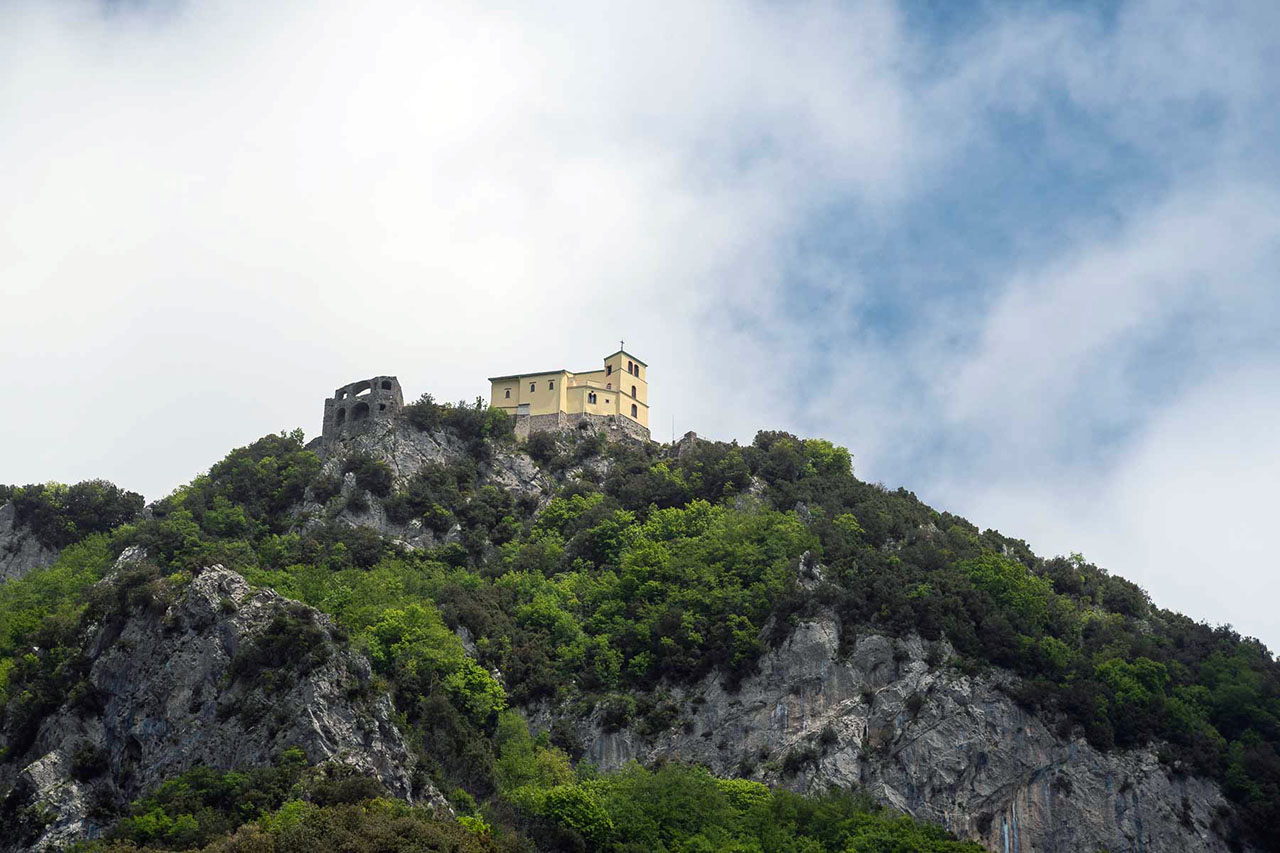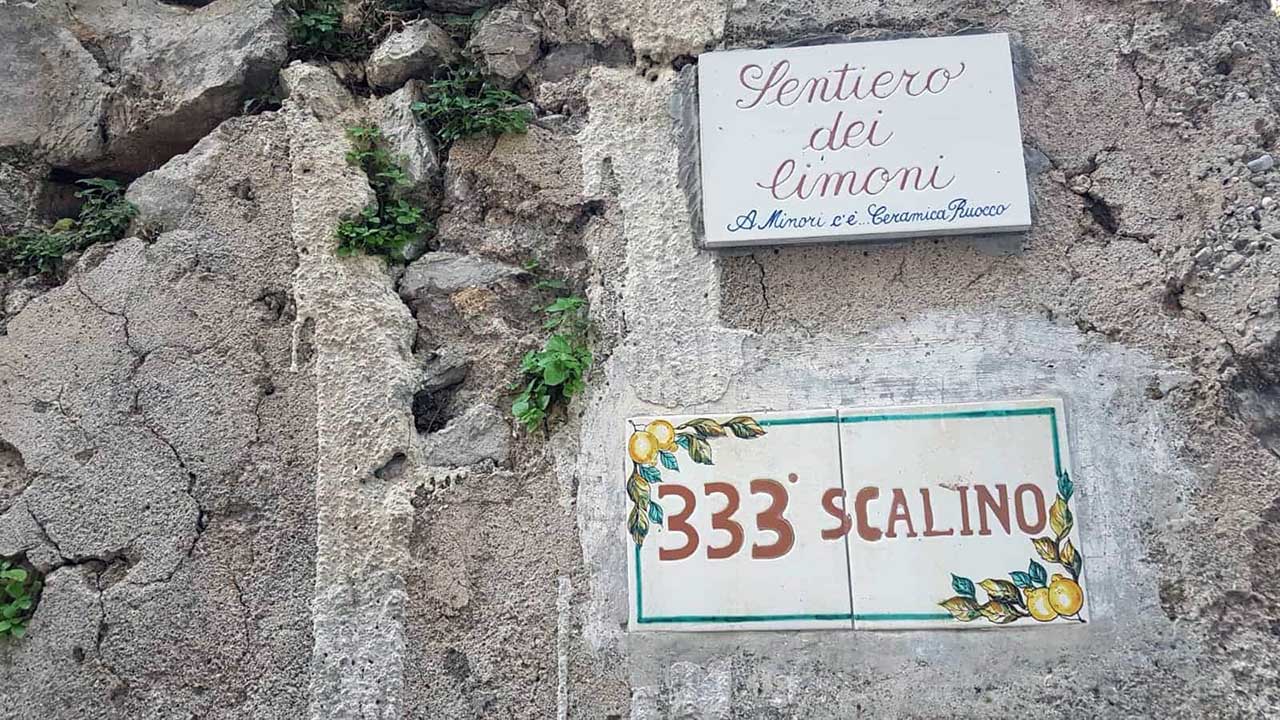Three different itineraries to walk that pass through the beauty and typicality of the area.
October 10th, 2022. By Editors
The art, spirituality, and food are all framed by the iconic colors of the coastal landscape. Three routes lead into the heart of the east side of the Amalfi Coast, leading from Vietri Sul Mare to Minori. Travel idea is suitable for trekking lovers who have only three days to immerse themselves in the coastal landscape.
Day 1: From Marina di Vietri to Albori
You can leave your car in Marina di Vietri. From there, you pass under an archway that leads to a path studded with steps that lead to Raito, where the workshop of the famous ceramist Lucio Liguori is based. The name of this small village comes from the Latin word “ragitus,” meaning sun-kissed. A small town characterized by narrow, climbing alleys, it is home to Villa Guariglia, formerly the historic home of Raffaele Guariglia, owner, Italian ambassador of the Order of Malta, and Foreign Minister in the Badoglio government.
The Villa is home to the Provincial Museum of Ceramics with works that tell the story of the area’s art created by celebrated artists, including Vincenzo Pinto, Giovannino Carraro, Giosuè, and Salvatore Procida, Irene Kowaliska, Elle Schwartz and Richard Dolken. Since 2001, in addition to the collection, there has been a display of riggiole tiles used to cover and decorate the floor.
Walk upward to Albori: the village is part of the association of I Borghi più Belli d’Italia. Located 264 meters above sea level and surrounded by the peaks of Mount Falerio, the town is painted by a succession of colorful residences built of stone and lime. Small terraces of lemon trees frame villas that seem suspended in the sky. Staircases with majolica inlays lead to the main square where the Greek-Oriental Church Santa Margherita di Antochia, built in the 1600s, is located.
This sacred place is at the center of a belvedere from which one can see the iconic coastal landscape with its sheer cliffs and the breadth of the Gulf of Salerno. To the left of the forecourt starts a small road that, between one step and another, leads to a nature trail where one can stop on a vantage point that offers a 360-degree view of the interior landscape. Proceeding in this direction, we then come to a mule track that leads to Iaconti, another small hamlet of Vietri Sul Mare.

Day 2: From Cetara to the Sanctuary of the Avvocata
A challenging route leads up to the Sanctuary of the Avvocata in Maiori. It starts from Cetara’s cemetery, proceeding to a path that skirts Mount Falerio until you reach the salt saddle, where an old chapel is. Turn to the right to pass under the promontory ridge that ends with the Capo d’Orso: shades of green characterize this stretch that features typical Mediterranean scrub vegetation.
From there, in an hour, you’ll reach the destination: the striking Sanctuary of the Avvocata that governs the village of Maiori. From this point, the view is lost over the Gulf of Salerno, which reaches from Punta Licosa to Capri. Exploring the surroundings of the Sanctuary, one encounters two caves positioned below this sacred place.
The first, the Grotta Delle Apparizioni, features an altar for religious services. The second, the Cave of the Soppressate, is named after the presence of stalactites inside it. It is one of the most beaten paths by pilgrims from all over Campania. They climb up to the shrine every year on Pentecost Monday. A procession where the rhythm of the tamorre punctuates contemplation of the spirit and nature.

Day 3: From Maiori to Minori along the lemon path.
Even before the construction of the Amalfitana, this was the only walkable route connecting the two towns. For centuries peasants walked along this path with bags of lemons on their backs, then shipped to Spain and other countries. The area with the highest concentration of terraces is where the famous Sfusato Amalfitano is grown.
There are about 400 large ones that characterize the 3-kilometer route that starts from the collegiate church of Santa Maria a Mare in Maiori, the church represented by its majolica dome. From here, you follow Via Vena, and step after step, you pass through lemon groves and flower gardens. As you walk, you reach Borgo Torre, where the small square of San Michele is home to the church of San Michele Arcangelo, dating back to 936.
Continuing along this street, one arrives at the belvedere of the “mortella,” a panoramic terrace overlooking the sea and opening onto the Gulf of Salerno. From this point, the descent to Minori begins. The farmers and the members of the Proloco of Minori enhanced the trail over the years, understood the historical and cultural value of this heritage, and implemented practices to protect and safeguard the entire ecosystem.

